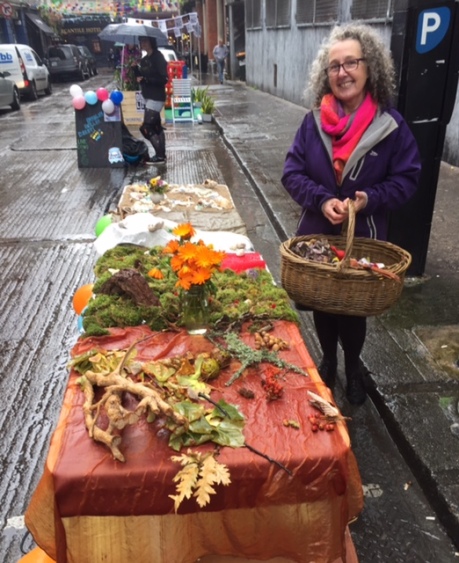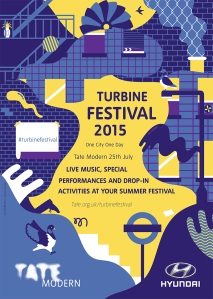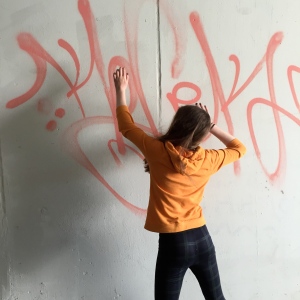A Play Park not Car Park for Children
October 4, 2017

Photo: A Rudolf Steiner (Waldorf) school inspired nature table at Dublin Parking Day
Dublin Parking Day
“We are turning car parking spaces into public parks, games or art installations for one day every year. Park(ing) Day is intended to promote creativity, civic engagement, critical thinking, unscripted social interactions, generosity and play.” http://www.dublinparkingday.org
“The idea of dwelling takes into account processes of working with materials and not just doing something to them, and of being part of the emergent processes of bringing something into being. The studio [is] not a rigid place, a container for creative acts and materials, but an emergent space.” Encounters with Materials in Early Childhood Education by Veronica Pacini-Ketchabaw, Sylvia Kind and Laurie L.M. Kocher



Photos: A playground for children not a space for cars. The Bloom Fringe Parking Day area for young children taking to the street.
Children should be part of life on the street. Spaces for art, toys, games and a chance to wander off the sidewalk. What a difference curb side entertainment makes to a city for people of all ages! Stepping beyond the boundaries, making street art, and being at the centre of it all. This is what we all want, and young children show us how its done.
 Photo: Dublin Parking Day website, http://www.dublinparkingday.org
Photo: Dublin Parking Day website, http://www.dublinparkingday.org
The Bloom Fringe Festival developed an interactive parking space for children on Dublin Parking Day. Bloom Fringe is a series of events and workshops aimed at greening urban Dublin. Its goal “is to celebrate biodiversity and sustainability, encouraging and inspiring people to use their city more by bringing together communities, artists, performers, professionals, enthusiasts and free thinkers” (www.bloomfringe.com).

Photo: Photo: Dublin Parking Day website, http://www.dublinparkingday.org
Out in the Open: Youth and Public Interactions
July 9, 2015
The act of writing upon walls is an equally ubiquitous and elemental act, one linked to the primal human desire to decorate, adorn and physically shape the material environment (Rafael Schacter, The World Atlas of Street Art and Graffiti)
CIRCUIT (www.circuit.tate.org.uk), an arts programme for young people led by the TATE galleries, encourages youth to respond, participate and provoke public interaction. Rather than designate and separate youth arts away from public life, the ethos of CIRCUIT is to promote cultural diversity led by young people’s agency and physical impact upon the world around them. CIRCUIT’S spokesperson, Mark Miller, attributes the success of the programme to supporting young people’s cultural production, their authentic languages and codes of culture. Miller believes that young people’s art should not be hidden away in studios or enclosed spaces, but rather be unleashed upon society. The goal is to interrupt predictable routines of daily life, with a spirit of independence. In this regard art galleries can become sites of social action, which challenge us to not only think differently but to act differently as well.
Photo: The Turbine Festival, CIRCUIT, Tate Modern, July 25, 2015
The philosophy of CIRCUIT has infused the development of two arts and health projects called Art Cures and Urban Art Encounters (www.groundswell.ie). In both cases choreography has been developed by young people to respond to their social environment. Physical movement draws upon the art of everyday places and animates perception. Rather than segregating youth arts into enclosed spaces, young people should enact the spirit of life within everyday situations in an immediate way. Making their marks through the manipulation of space, through interactions with the built environment, and through engagement with others, young people can reconfigure the dimensions of lived experience. The ability to spontaneously respond to the world at hand is a life skill and an artistic endeavour. Acts of exposure, taking risks, and investigating the taken for granted means that young people’s actions inspire others to also discard their inhibitions. In this regard youth arts can erupt into daily life and challenge complacency with excitement and an energetic force directed towards letting go.




